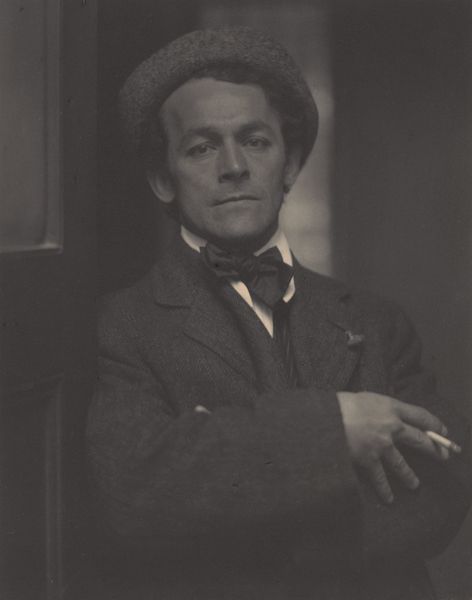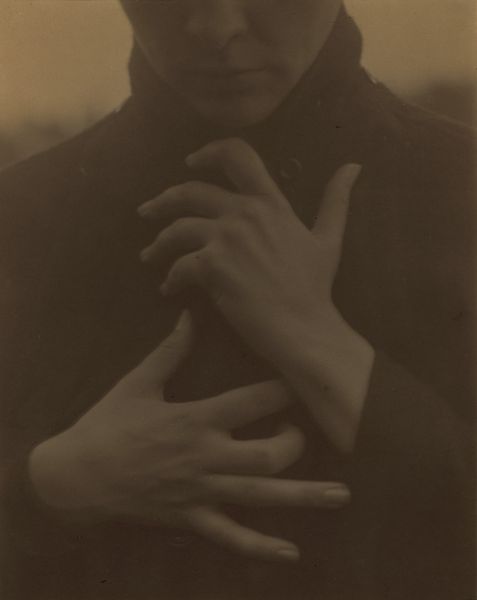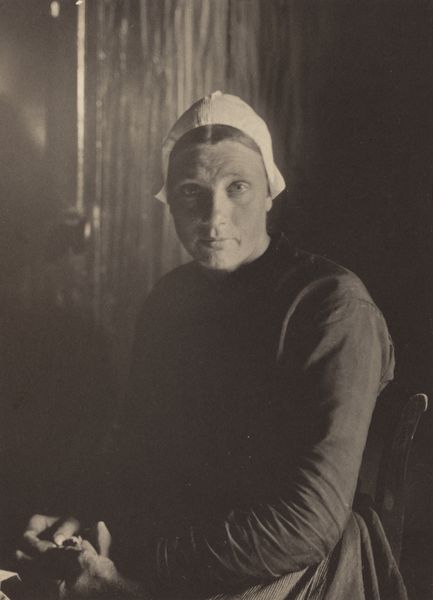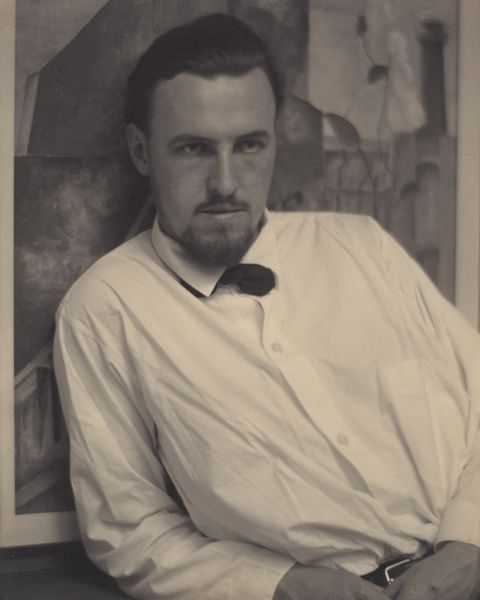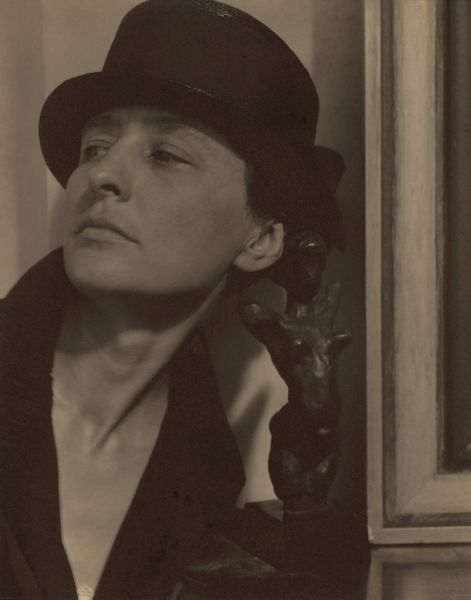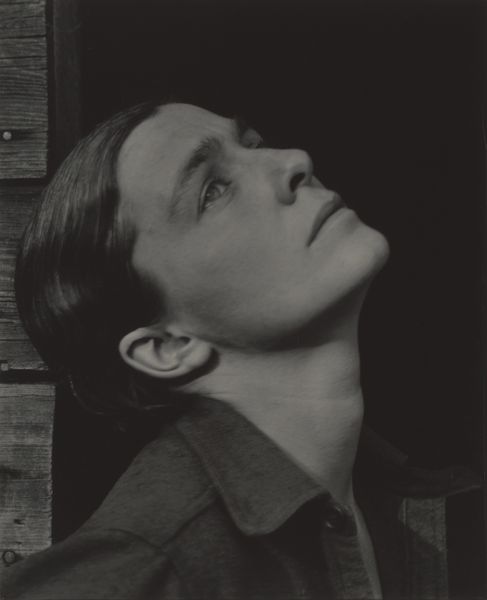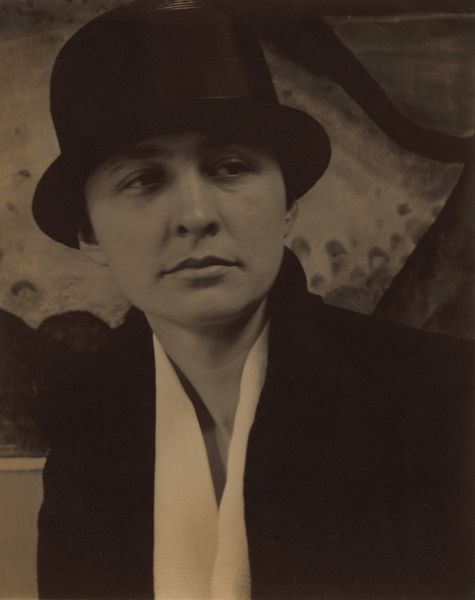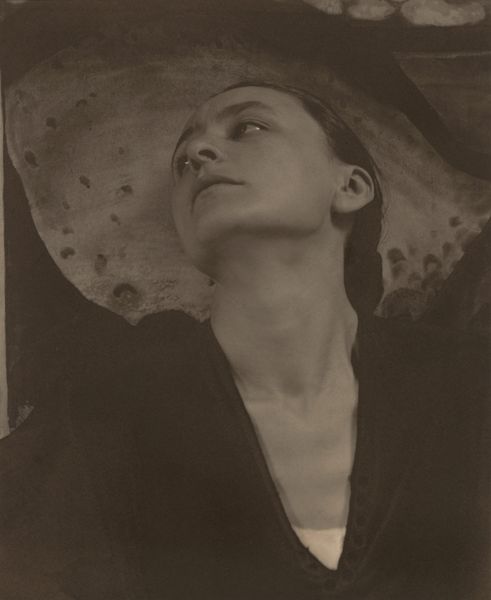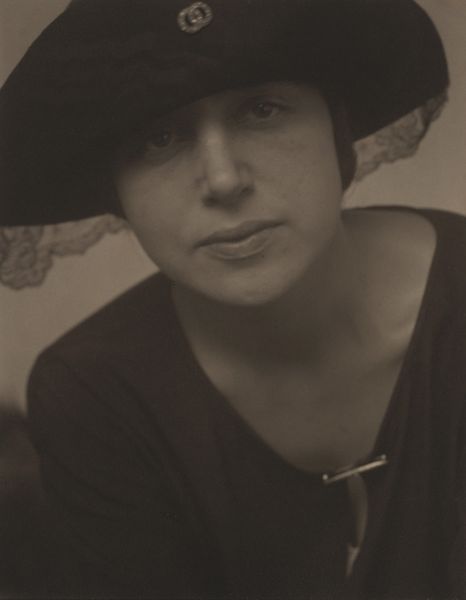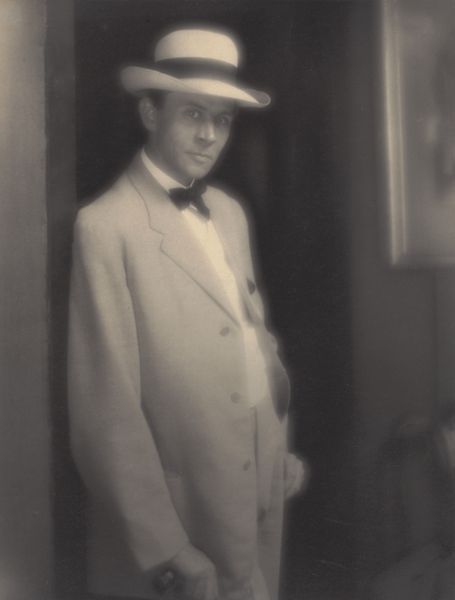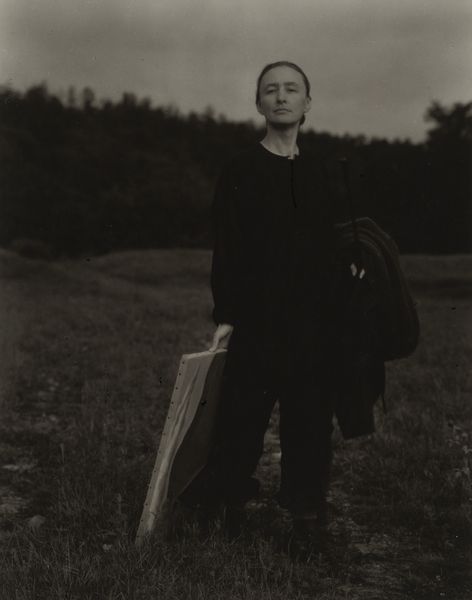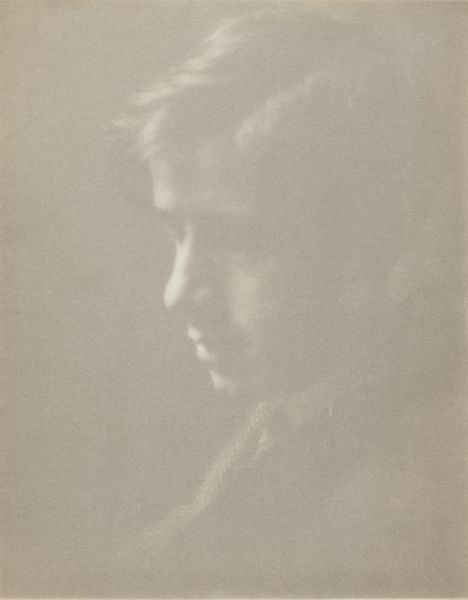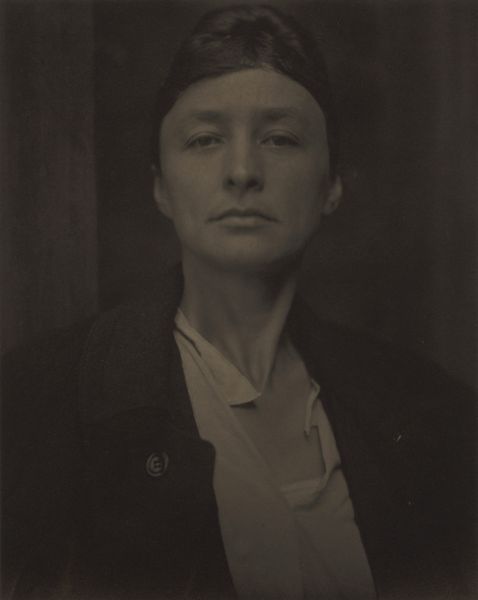
photography, gelatin-silver-print
#
portrait
#
pictorialism
#
photography
#
historical photography
#
single portrait
#
gelatin-silver-print
#
modernism
#
portrait photography
Dimensions: image: 24.5 x 19.5 cm (9 5/8 x 7 11/16 in.) sheet: 25.2 x 20.2 cm (9 15/16 x 7 15/16 in.)
Copyright: National Gallery of Art: CC0 1.0
Curator: Here we have a portrait of Paul Strand, captured in 1919 by Alfred Stieglitz. It’s a gelatin silver print, typical of the era. What strikes you initially? Editor: There's a somber quality, a weight to it. It’s not just the sepia tones. Look at the rough fabric of his shirt, the working man's tie, and how they interact with the soft, pictorialist focus. It makes you wonder about class dynamics in artistic portrayal. Curator: Exactly! Stieglitz was intentionally elevating photography to the level of fine art, in a period defined by growing industrialization and social shifts. Choosing Strand, another photographer deeply engaged with Modernism, suggests a collaborative statement about art's evolving role. Editor: And it is fascinating that he holds the cigarette with such self-awareness. The way he stands makes him the epitome of the artistic type. Look at how the light hits his hands; the materiality of his garments juxtaposed with this almost classical portrayal elevates labor but idealizes the labourer at the same time. Curator: Remember that Stieglitz and Strand both pushed against traditional academic art. Strand’s straight photography, with its sharp focus and emphasis on form, was gaining momentum and, along with other practitioners and theoreticians of the era, sought to challenge what was previously perceived as “art”. Stieglitz embraced this trajectory. Editor: The portrait’s stillness conveys this pivotal point; it hints at what photography *could* be, almost rejecting the heavily manipulated pictorialism then fading away. But by using these specific material choices in such sharp focus, he’s grounding the artistic in everyday realities. It creates that pensive air. Curator: It shows photography not just as a medium for documentation but for artistic expression, reflective of the shifting cultural landscape and self-representation, pushing us to consider how art influences perception and reflects societal changes. Editor: A compelling snapshot, indeed, blending aspiration with lived experience, blurring boundaries. Curator: Precisely. It prompts contemplation of how aesthetic value is crafted from material reality.
Comments
No comments
Be the first to comment and join the conversation on the ultimate creative platform.
